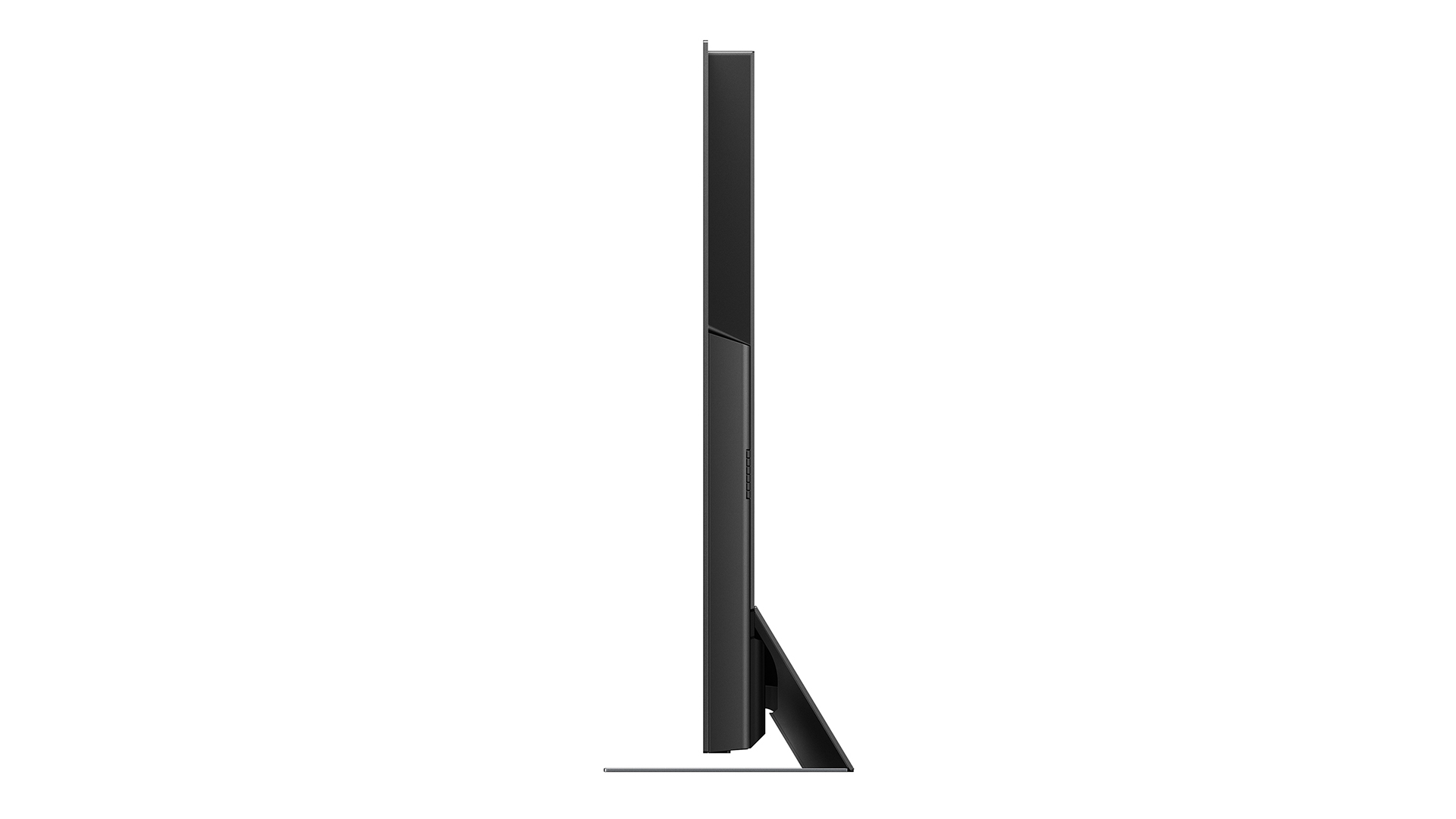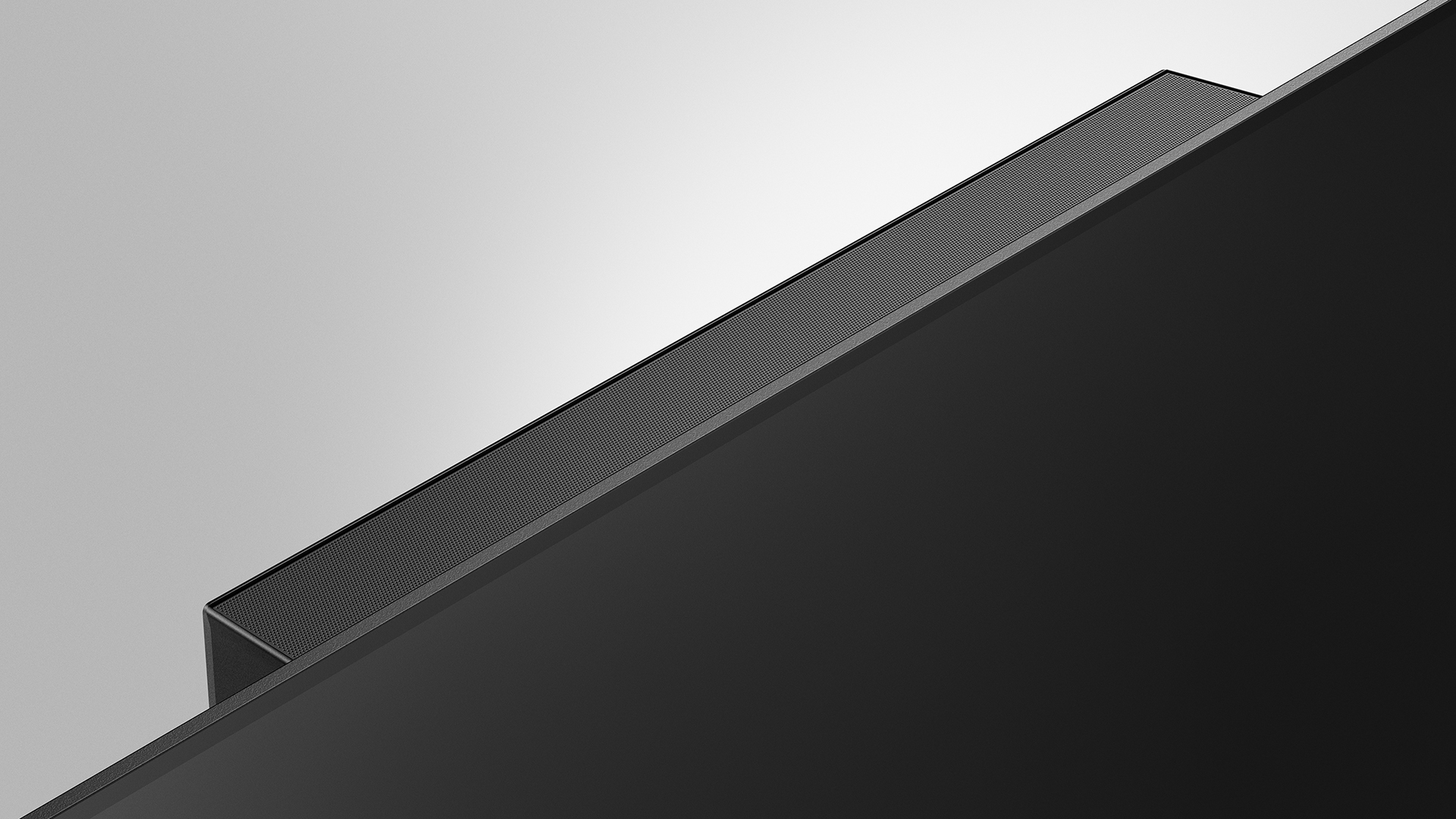What Hi-Fi? Verdict
The picture is superb, but the HZ2000 is also designed to deliver excellent sound, and it falls surprisingly short of that
Pros
- +
Excellent all-round picture quality
- +
Dolby Vision and HDR10+
- +
Big Dolby Atmos audio performance
Cons
- -
HZ1000 offers similar picture for less
- -
Sound lacks clarity and excitement
- -
Missing next-gen HDMI features
Why you can trust What Hi-Fi?
The HZ2000 sits right at the top of Panasonic’s current TV range, elevated above its siblings with a so-called ‘Professional Edition’ OLED panel and an integrated speaker system that boasts genuine upward-firing Dolby Atmos drivers.
We loved the HZ2000’s predecessor, the GZ2000, with which it shares much of its design and technology, and we’re big fans of the more affordable HZ1000, so the omens here are very good indeed.
Something, though, has gone rather wrong here, and the issue lies mostly in the sound department.
Pricing
The Panasonic TX-55HZ2000B launched in 2020 at a price of £3295, but has since been heavily discounted and can now be yours for £2299.
While that’s a huge drop, the HZ2000 still commands a big premium over its HZ1000 sibling, which at the time of writing is available for £1499. That extra £800 gets you Panasonic's upgraded ‘Professional Edition’ OLED panel and a far more advanced speaker system.
Both TVs are also available as 65in models, but Panasonic doesn’t currently sell a 48in or 77in OLED, nor does it sell consumer OLEDs in the USA or Australia.
Features

The HZ2000 looks more or less identical to the GZ2000 it replaces, and that makes it a fairly utilitarian aesthetic proposition. Not that there’s anything wrong with that – Panasonic has resisted the urge to push flashy designs, instead choosing to allow the performance to do the talking.
A key part of the HZ2000 proposition is its advanced, Technics-tuned, Dolby Atmos sound system, which consists of a soundbar subtly mounted beneath the screen and a set of drivers firing upwards from the top of the set’s rear. In total, the system’s amplification is rated to an impressive-sounding 140W.
No other manufacturer has yet taken the same approach, and perhaps that’s at least partly because of the repercussions it has in terms of design. While almost all OLED TVs have an enclosure mounted to the rear of the panel for speakers, processing hardware and connections, the HZ2000’s is much larger than most, with the set measuring just under 8cm front-to-back in all but the top two corners.

Screen OLED
Resolution 4K
Operating system My Home Screen 5.0
HDR formats HDR10, HLG, Dolby Vision, HDR10+
HDMI x4
USB x2
Optical x1
The LG OLED55CX is under 5cm at its thickest point, while the Samsung QE55Q90T is 3.5cm thick all over. Ultimately, all that means is that the Panasonic will stand off the wall more than most and you might have to point to those thin corners in order to show that it really is an OLED.
As well as having those extra speakers, the HZ2000 differs from its siblings, such as the excellent HZ1000, through the use of a Professional Edition panel. Panasonic doesn’t offer much detail on the differences between its standard and Professional Edition panels, but it’s a custom panel (supplied, as with all OLED panels, by LG) that goes through extra tuning by Panasonic’s engineers, resulting in a brighter picture than is typically available from an OLED TV.
Other than those two additions, the HZ2000 is the same as the HZ1000. It’s powered by the HCX Pro Intelligent Processor (introduced with 2019’s OLED TVs), and it boasts support for both HDR10+ and Dolby Vision HDR formats (including light-sensing Dolby Vision IQ), as well as Netflix Calibrated and Filmmaker Mode, though we’d recommend avoiding those last two on account of the dull picture they produce.
The operating system is My Home Screen 5.0, which is simple to use, but also rather dull and less app-packed than many rivals. While you get Netflix with full Dolby Vision and Atmos support, Amazon Prime Video with HDR10+ and Atmos, and the full suite of catch-up apps courtesy of Freeview Play, the likes of Disney+, Apple TV and Google Play Movies & TV are all missing. In terms of music, the only app of note that’s on board is Deezer.
It’s also worth noting that the HZ2000’s HDMI sockets lack support for 4K@120Hz (also known as HFR, or High Frame Rate) and VRR (Variable Refresh Rate), making it a less than ideal choice for gamers, particularly those who own PS5 and/or Xbox Series X consoles. ALLM (Auto Low Latency Mode) and eARC (Enhanced Audio Return Channel) are at least supported.
Picture

As with the HZ1000, the HZ2000’s Dolby Vision IQ mode, which is designed to produce a consistent Dolby Vision experience regardless of ambient lighting conditions, skews a little dim and soft for our tastes. It’s not a bad image, but it feels as if Panasonic is playing things a bit safe here, and the punchier, crisper Dolby Vision picture provided by the Award-winning Philips 55OLED805 makes for the more exciting watch. The new Dolby Vision Vivid preset takes things too far the other way and we can’t help but wish Panasonic had kept its Dolby Vision Bright mode alongside Dolby Vision IQ.
Still, a slightly dull Dolby Vision performance isn’t the end of the world, especially when the HZ2000’s picture performance is otherwise exemplary. Playing Blade Runner 2049 on 4K Blu-ray, the HDR10 image pops from the screen. This film is all about contrast, and the Panasonic ensures that the neon signs and holographic billboards of downtown LA pulse brilliantly against the dark sky and grubby, monolithic buildings. Pure, inky black is delivered as required, and where some OLEDs hold back when asked to deliver a bright highlight in an overwhelmingly dark image, the HZ2000 delivers all of the dramatic dynamism you could hope for.
Detail levels are exceptional, both in the rare bright moments and the far more common dimly lit scenes, and there’s a supreme sharpness that makes everything seem more three-dimensional. Motion processing is fantastic, too. Leave Intelligent Frame Creation on the default Max setting and you get some of the sharpest and smoothest motion available from any TV. It’s surprisingly natural and authentic in this mode, too, successfully avoiding the so-called soap opera effect. It introduces occasional shimmer around tricky movement, but dropping Intelligent Frame Creation to Min results in the best overall balance, even though it allows some blur and judder in. All told, Panasonic is now right up there with Sony for motion handling, and that really is saying something.
Dropping down to Fargo on HD Blu-ray, the HZ2000 proves itself to be an extremely capable upscaler, too. As the hapless Jerry pulls into the King of Clubs bar for his fateful meeting with Carl and Grimsrud, there’s a slight excess of picture noise that can be reduced by dropping the Sharpness setting by a few points, but the picture is otherwise beautiful, with perfectly balanced colours, lots of detail and nuanced, subtle shading. The picture simply looks correct and natural, and this is the Panasonic’s greatest strength across all sources. Even early episodes of Peep Show in standard-def are passably clean and naturally balanced.
Other than a slightly disappointing default Dolby Vision setting, the HZ2000 is a superb all-round performer in the picture department. The only problem is that the significantly more affordable HZ1000 is also superb. Last time around, the GZ2000 delivered a clearly better picture than its more affordable siblings, but here the upgrade is a lot less obvious. Bright highlights are slightly punchier and there’s a little extra vibrancy, but we’re talking small margins here. On picture alone, it’s not worth spending extra on the HZ2000 over the HZ1000.
Sound

With the picture improvements being so marginal, the HZ2000 needs to justify its premium over the HZ1000 almost entirely with its audio performance, and this is where things take a surprising and disappointing turn.
Playing our favourite Dolby Atmos test scene, the plane bombing run in Unbroken, the HZ2000 continues where the GZ2000 left off in terms of spaciousness and scale. The front-facing bar sends out effects far to the left and right while the upward-firing speakers send sound right up to the ceiling and a decent distance into the room. It isn’t full virtual surround sound, but the HZ2000 fills a room more effectively than any other TV-integrated sound system that we can think of.
However, while this flagship model is undeniably weightier and more spacious than the HZ1000, it’s also badly lacking clarity and precision. The placement of effects is quite imprecise and dialogue is buried once the action kicks in. The Dialogue Enhancement option can help with the latter, but it also adds an audibly processed essence to voices that makes them sound a bit unnatural.
Concerned that we might have received a faulty sample, we call in a second HZ2000 as well as a sample of the GZ2000 that it replaces, but doing so only confirms our suspicions. Not only does the second HZ2000 sample sound the same as the first, it sounds significantly worse than the older GZ2000, which is cleaner and crisper, with better-projected dialogue. The HZ2000’s delivery is muffled and sounds more closed in and cluttered when compared with the GZ2000. It is significantly less punchy and dynamic, too.
All told, the outgoing model is exciting and engaging where the HZ2000 is not. More importantly, though, the HZ2000 is less clear and transparent than the cheaper HZ1000, and that’s a big price to pay for the added spaciousness and weight.
Verdict
With the picture improvements over the HZ1000 proving to be so slight, the HZ2000 needs to justify its price premium almost on sound alone. That’s a task we had little doubt it would accomplish, such was the audio quality of its GZ2000 predecessor, but Panasonic has taken a surprising backwards step here: while the spaciousness and scale remains, punch, clarity and dynamics have taken a hit.
With any luck, this is just a blip and the company's already-announced flagship JZ2000 OLED for 2021 will be a return to form. If you’re looking to buy a Panasonic OLED right now, though, we heartily recommend that you avoid the HZ2000 and instead choose the HZ1000 and a separate soundbar. Doing so will get you an almost equally stunning picture and markedly better sound.
SCORES
- Picture 5
- Sound 3
- Features 4
MORE:
Read our guide to the best OLED TVs you can buy
Read our Panasonic TX-55HZ1000B review
Read our Panasonic TX-55GZ2000B review
Read our Philips 55OLED805 review
What Hi-Fi?, founded in 1976, is the world's leading independent guide to buying and owning hi-fi and home entertainment products. Our comprehensive tests help you buy the very best for your money, with our advice sections giving you step-by-step information on how to get even more from your music and movies. Everything is tested by our dedicated team of in-house reviewers in our custom-built test rooms in London, Reading and Bath. Our coveted five-star rating and Awards are recognised all over the world as the ultimate seal of approval, so you can buy with absolute confidence.

